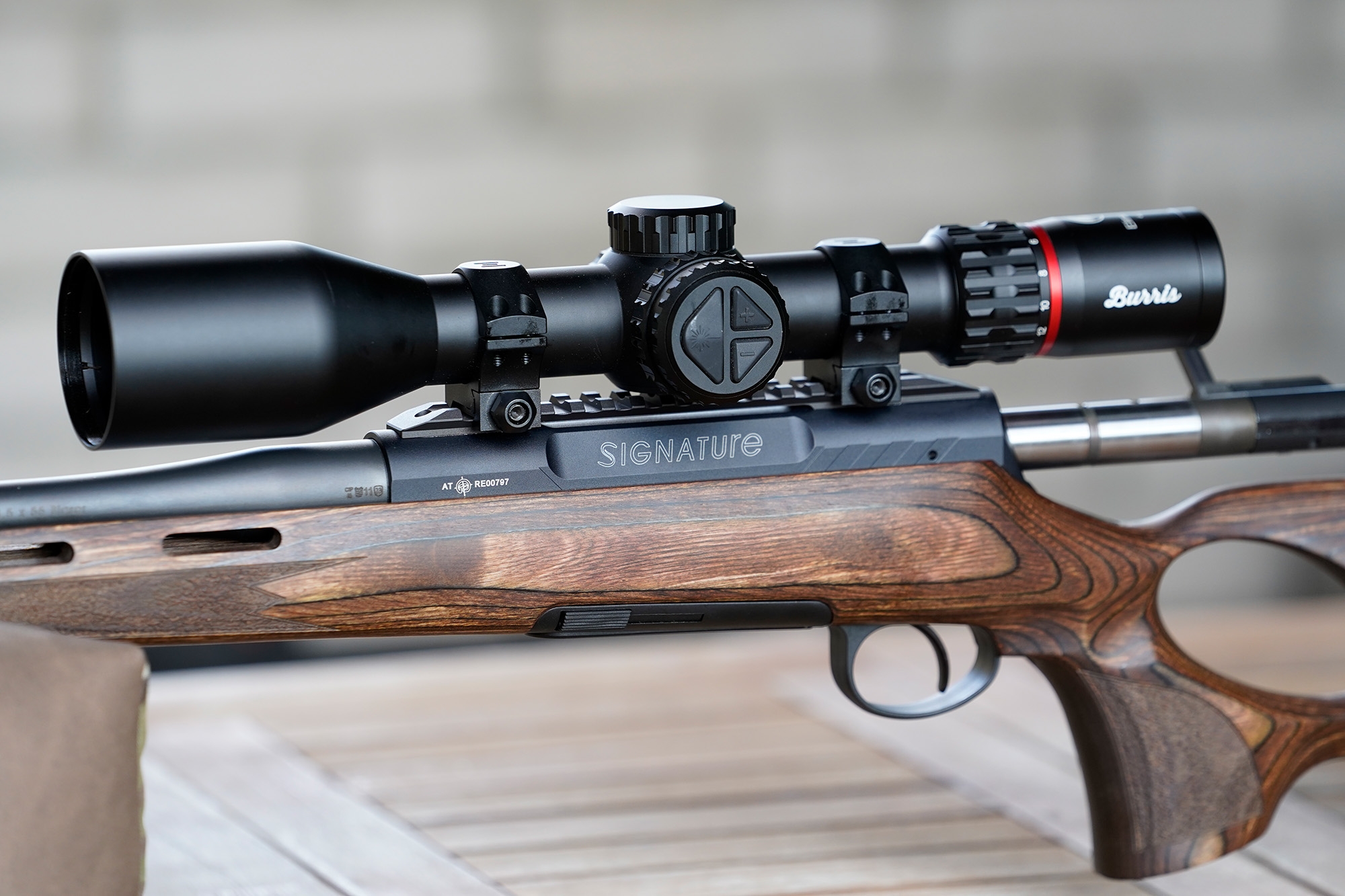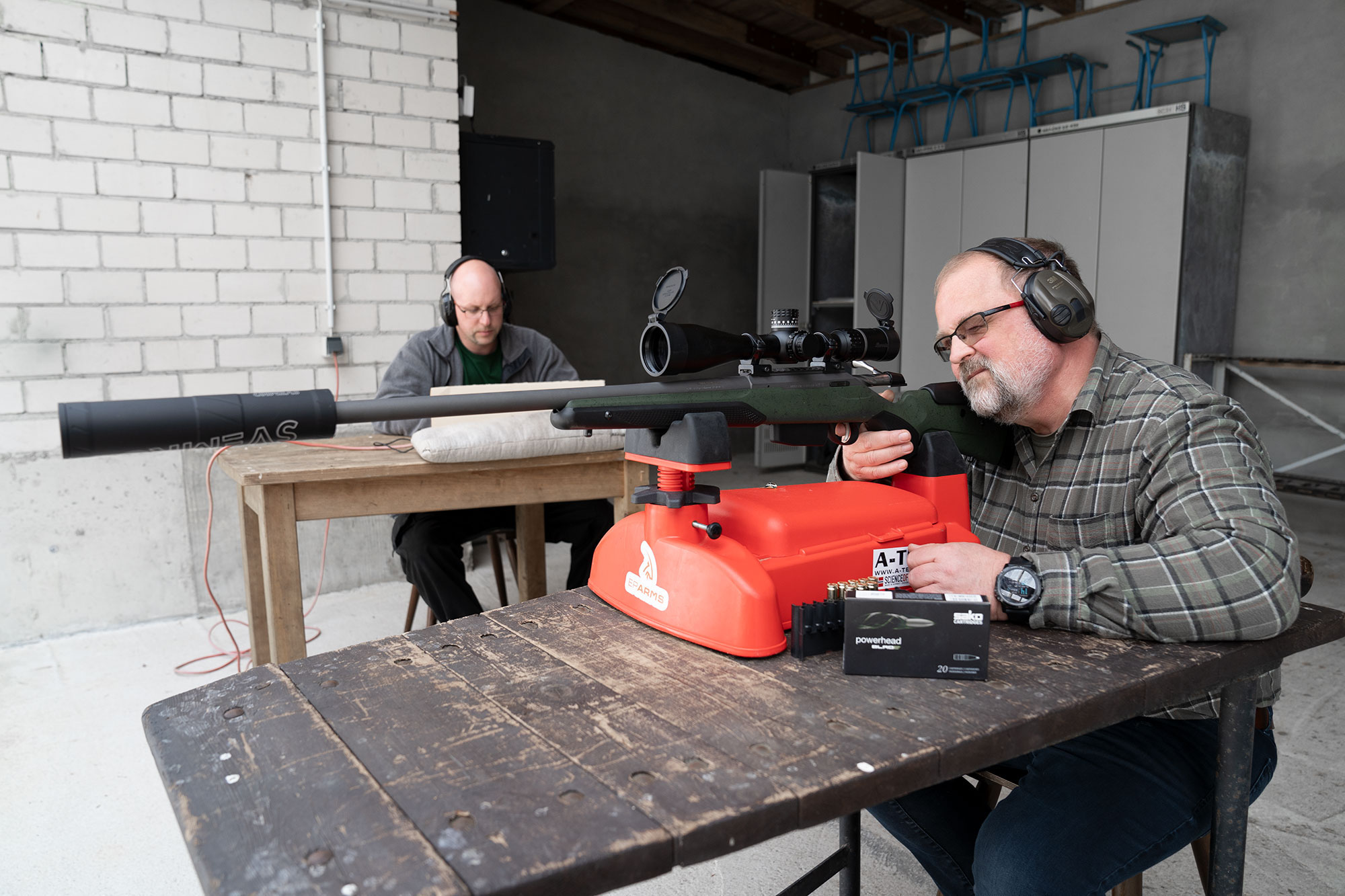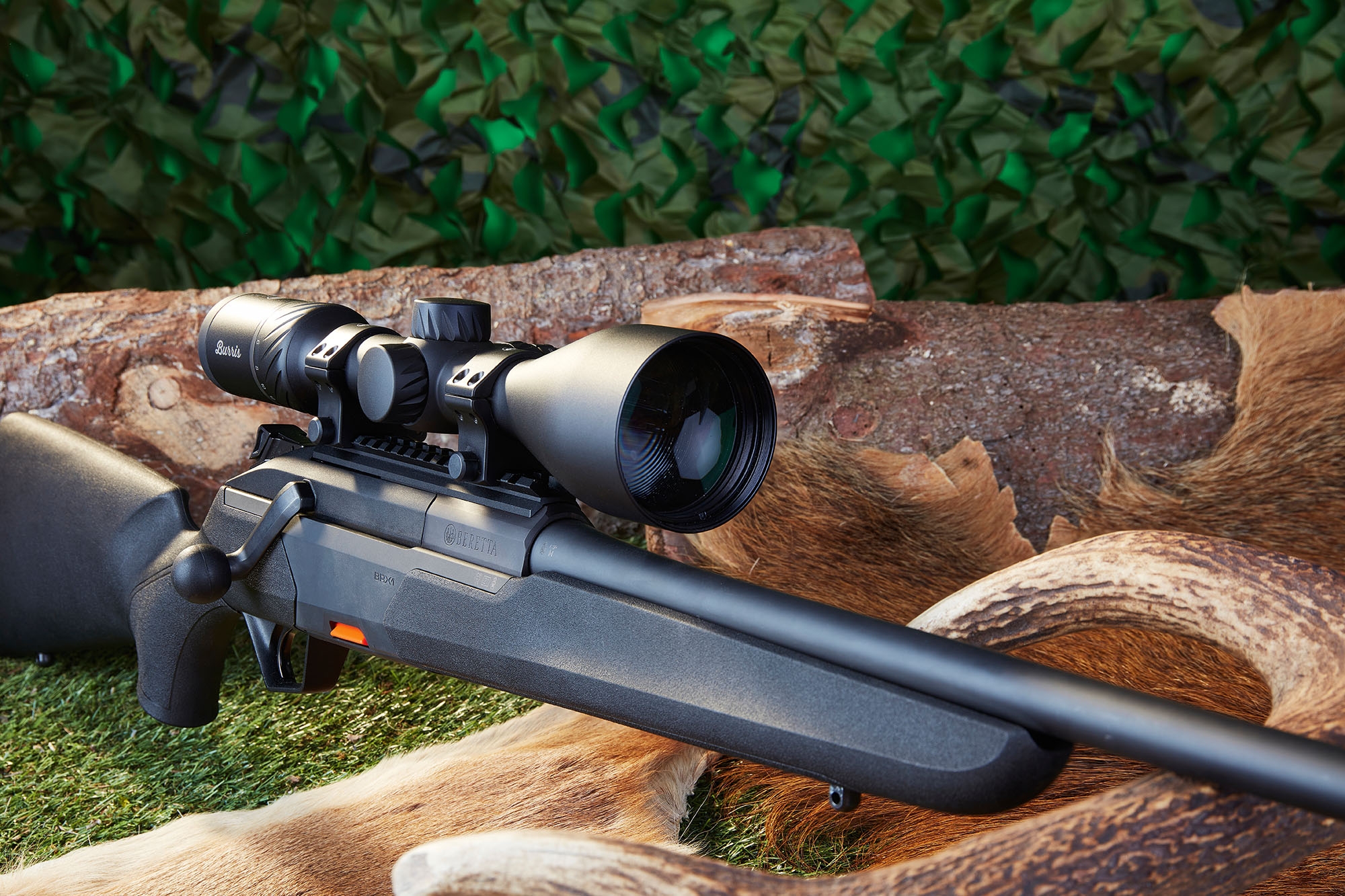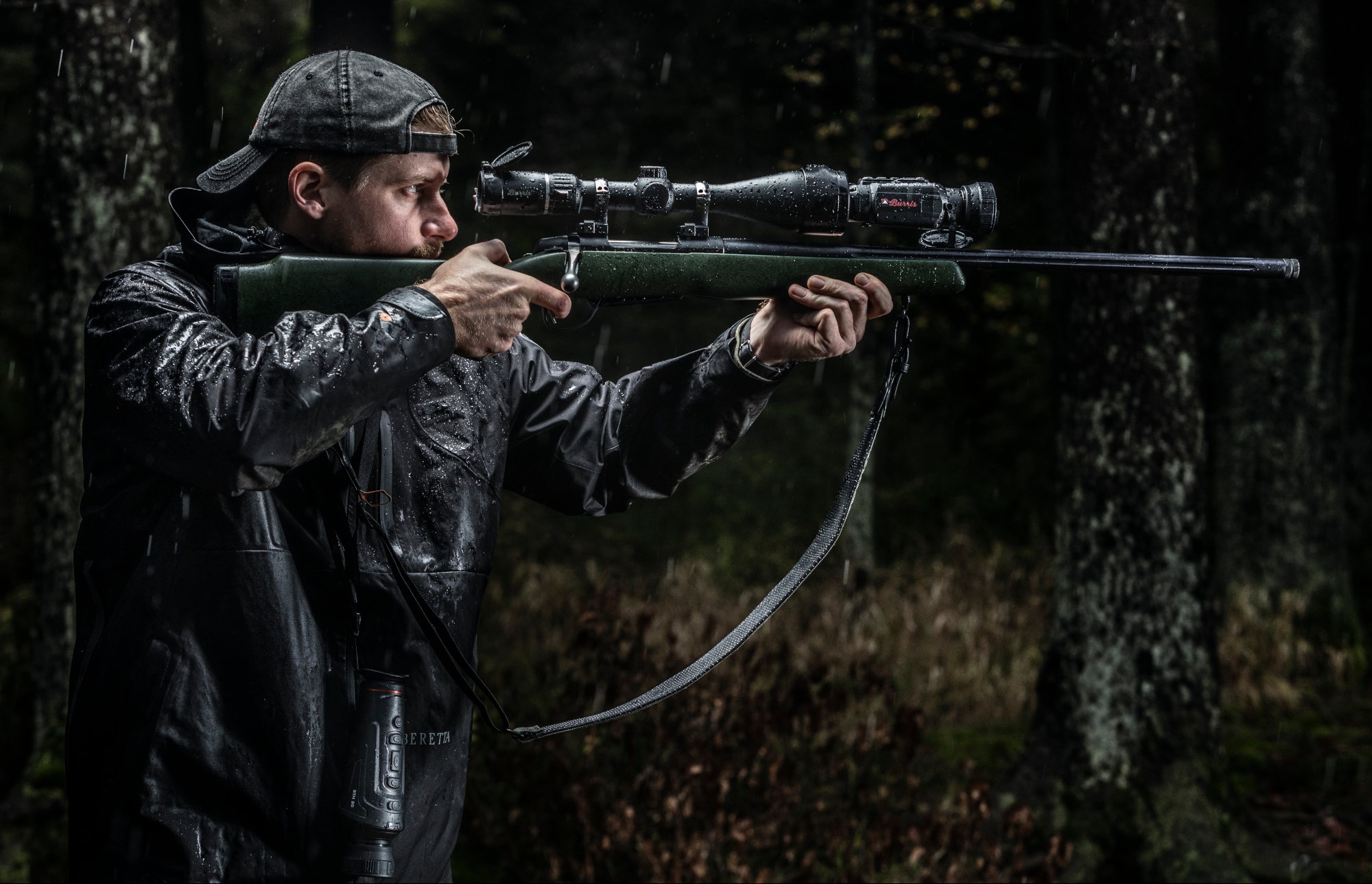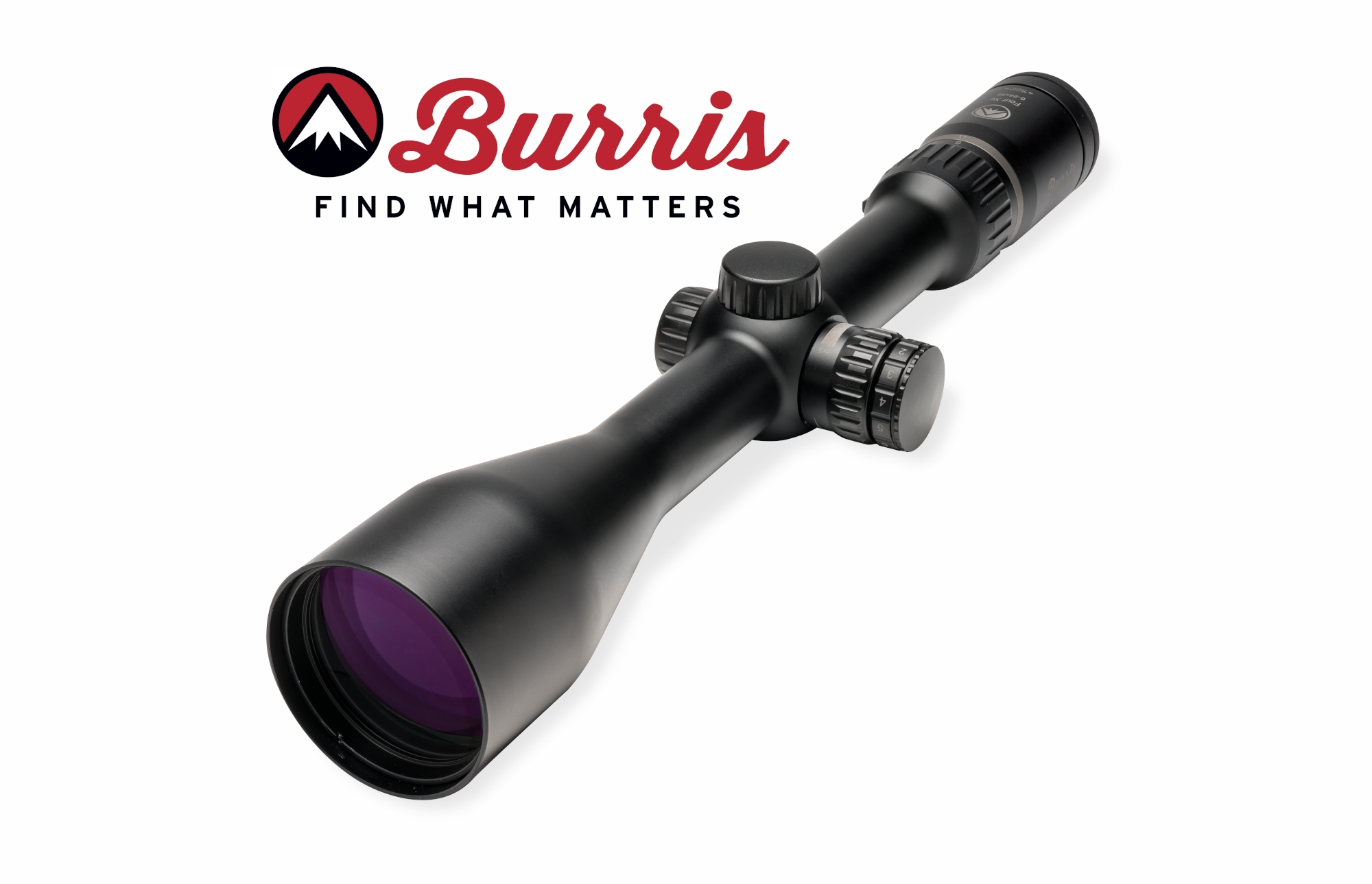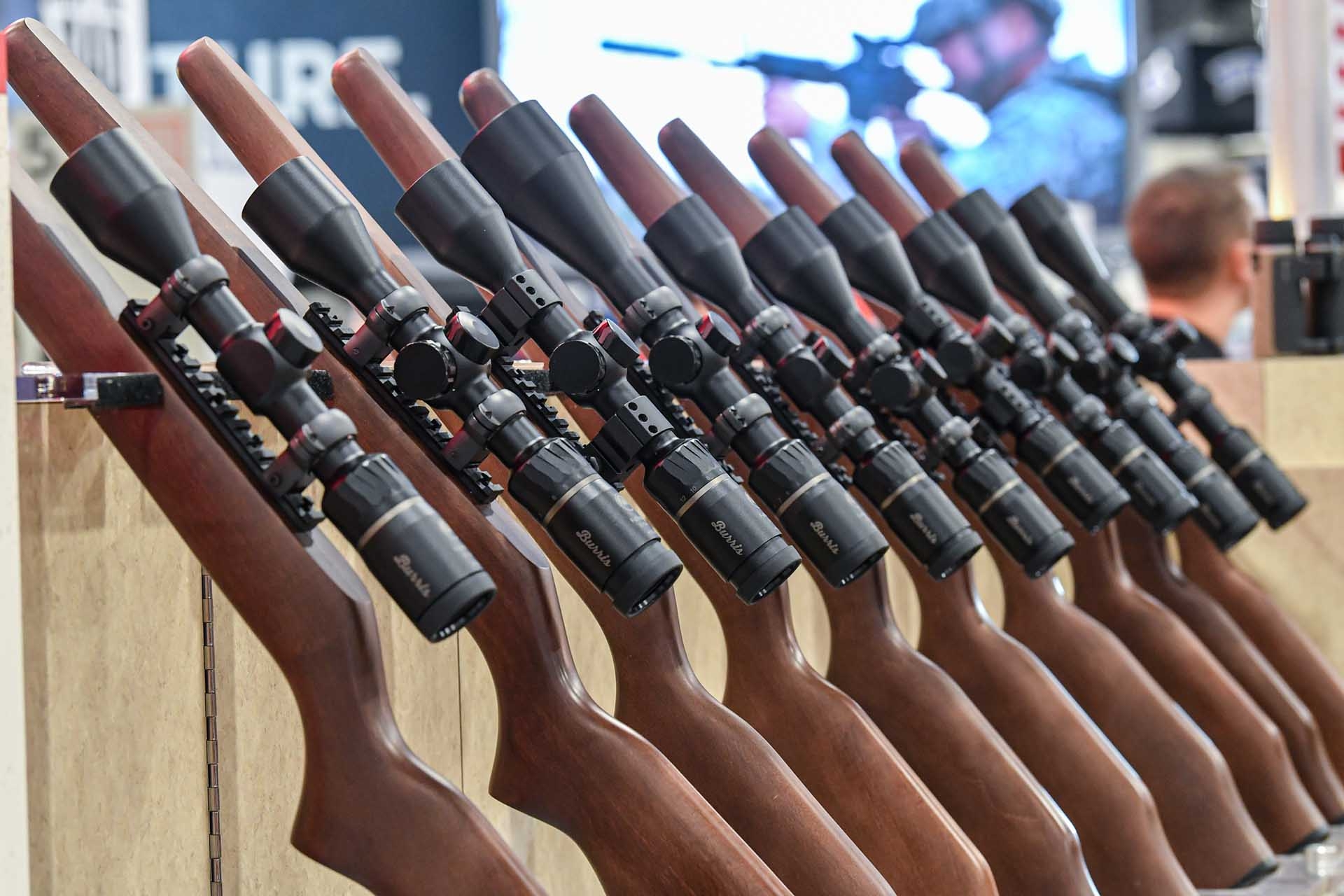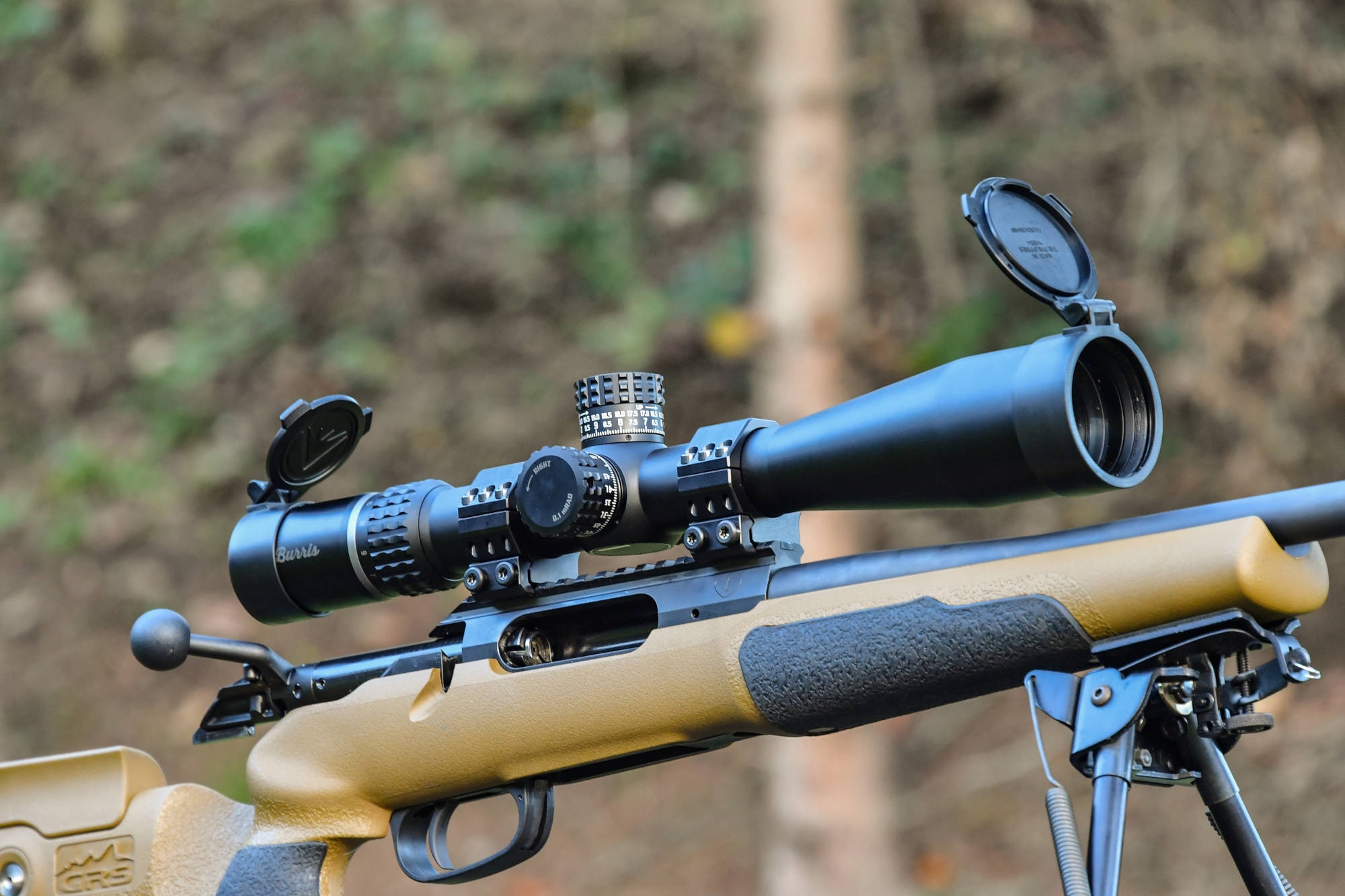Our first thought: this Burris 6-24x56 Four Xe test scope might even be of interest to Long Range (LR) beginners due to its maximum magnification. Greenhorns who want to get a taste of the world of long range shooting will need at least 20x magnification, satisfactory optical quality, sufficient elevation adjustment range, and a reasonable price. At 719 euro, the Burris Four Xe 6-24x56 is one of the most affordable LR-ready scopes on the market.
The optics and magnification of the Burris Four Xe Evolution 6-24x56
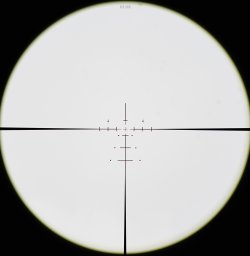
If you can't see the target clearly, the scope is simply worthless. For this reason, we always test the optical performance of the scopes in the field at a distance of 100 meters and take a photo through the scope. We chose the 100 meters from a practical standpoint because there are few atmospheric problems at that distance and most scopes that do not have parallax compensation are set parallax-free at 100 meters. Based on the photos, which in principle are always taken under nearly identical conditions, the test results can be compared. High-quality riflescopes, which operate in a different league optically and in terms of price, show the grid of the test target, which is made up of 0.2 mm thick lines, very clearly at 24x or 25x magnification. This performance in terms of resolution is rated as very good in many cases. This is joined by evaluation criteria such as contrast and color fidelity. We rate the Burris Four Xe 6-24x56 as good in terms of resolution, as the test target raster is still reasonably visible on the photos at 100 meters. We find the contrast sufficient, and we rate the color reproduction as satisfactory. The field of view at 24x magnification is 168 cm, which is even a tad more than the 1.6 meters/100 meters stated by the manufacturer. All in all, the Burris Four Xe offers a very good optical performance in its price range.
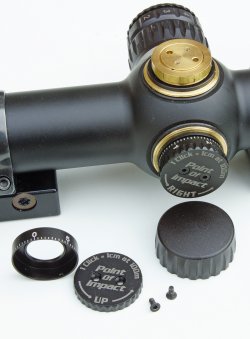
Parallax compensation is necessary for a riflescope with a magnification of 12x or more. If the parallax were fixed at 100 meters, for example, you would not really see a target object in focus at a distance of 250 meters at a 20x magnification. Our Four Xe is equipped with what is called a "side focus." A dial, usually positioned opposite the side focus turret, causes the focusing lens to be adjusted. With inexpensive riflescopes, we often state that the adjustment of the parallax does not always happen evenly.
Not so with this riflescope. This parallax compensation works very well. The wheel adjustment does not hook or turn suddenly with less or more resistance. The mechanics also have sufficient friction, so that unintentional adjustment by accidentally touching the wheel is almost impossible.
The single transverse mark on the dial marks the setting for the 100-meter distance. Repeatedly turning it back and forth showed the target image to be sharp at this setting every time at 100 meters. At other distances, the focus can be adjusted quickly and accurately.
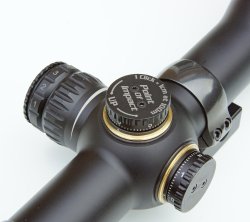
Very good: the LA E 3 reticle of the Burris Four Xe Evolution 6-24x56
We like the LA E3 reticle with bullet drop compensation (BDC) for hunting use. However, it is surprising that the reticle markings are rendered in MOA (Minute of Angle). For a riflescope for the European market and a reticle adjustment of 1 cm/100 m, one would also expect a reticle with metric markings. Vertically, the hashmarks show holdovers for 200, 300 and 400 yards. The holdovers are each 1.49-4.31-7.8 MOA below the center cross. For example, the BDC function fits a .30 bullet with 150 grains of bullet weight and a velocity of about 860 m/s. It goes without saying that the point of impact must always be checked in practice. Because the reticle is mounted in the second focal plane, adjustments can always be made using the magnification factor. The reticle illumination is limited to the fine, central cross. The lowest illumination settings are for late twilight only. From level 7, the luminosity is suitable for daytime use.
Reticle adjustment of the Burris Four Xe Evolution
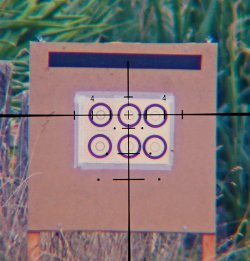
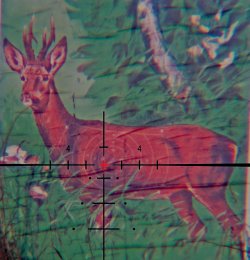
Only 25 MOA of elevation adjustment range are given in the technical specs of the user manual. This corresponds to about 75 cm and when you consider that theoretically less than half of the adjustment range remains for elevation adjustment, the shock is complete. An adjustment range of about 35 clicks (cm/100 meters) is never enough for Long Range. We measured the total elevation adjustment range of our test scope and were pleased to find that at 54.5 MOA – more than twice the adjustment range is actually available. Is our riflescope the exception or is there an incorrect specification in the manual? Even 54.5 MOA/158 cm is still meager for an LR riflescope. Zeroed-in at 100 meters, there are often no more than 70 clicks (cm/100 meters) left for elevation correction at long range. That's never enough for the 1,000 yards (914 meters) with a caliber like .308 Winchester! A mount with a 20 MOA pre-tilt provides a remedy. 20 MOA is a good 58 clicks (cm/100 yards). Together with the 70 clicks, we would have a maximum of 128 cm of elevation adjustment. That's usually enough for 1,000 yards using a medium caliber.
Burris Four Xe 6-24x56 specs and price
| Model: | Burris Four Xe Evolution 6-24x56 |
| Length: | 383 mm |
| Weight: | 788 g |
| Main Tube Diameter: | 30 mm |
| Eyepiece Length: | 105 mm |
| Eyepiece Outer Diameter: | 46 mm |
| Objective Outer Diameter: | 64 mm |
| Magnification: | 6-24x |
| Objective Lens Diameter: | 56 mm |
| Light Transmission: | Not specified |
| Field of View (at 100 m): | 5.7 - 1.6 mm |
| Exit Pupil: | 9.6 - 2.9 mm |
| Diopter Adjustment Range: | Not specified |
| Eye Relief: | 88 mm |
| Parallax Compensation: | Yes |
Parallax-Free Adjustment: | 22 m - ∞ |
| Adjustment per Click: | 1 cm per 100 m |
| Elevation Adjustment Range: | 25 MOA |
| Windage Adjustment Range: | 25 MOA |
| Reticle: | E3 |
| Reticle Illumination: | Yes |
| Automatic Switch-Off: | No |
| Waterproof: | Yes |
| Reticle Position: | 2nd focal plane |
| Price (RRP in Germany): | 719 euro |
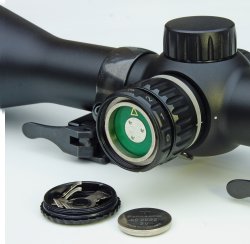
Our test conclusion on the Burris Four Xe Evolution
In terms of price/performance ratio, the Burris Four Xe 6-24x56 is a fine thing for the beginner. As a long-range hunting scope, it fits the bill because with the appropriate ammunition, you can shoot with the BDC reticle up to 366 meters. However, a 20 MOA pre-tilt mount is necessary for limited long-range use up to 1,000 yards.
The 6-24x50 from the same series from Burris could be an alternative, because it is equipped with the SCR MIL reticle better suited for sporting use. It is slightly more expensive at 769 euros, although you have to do without the 56 mm objective.
The additional 6 mm diameter of the 6-24x56 still offers 25 percent more surface area and thus more comfort. The proven Burris Four Xe Evolution 6-24x56 is a LR riflescope with good resolution and very well functioning parallax compensation for little money.



